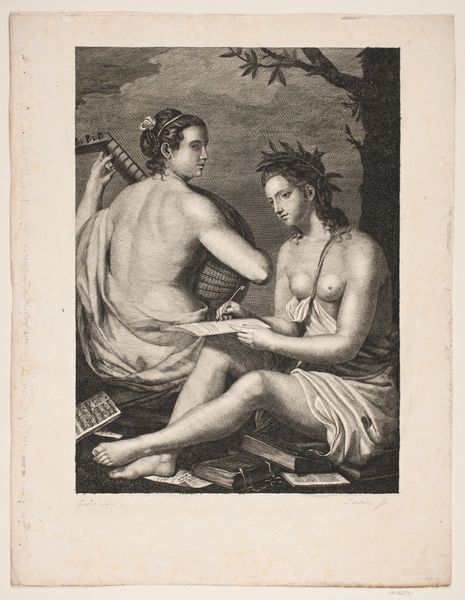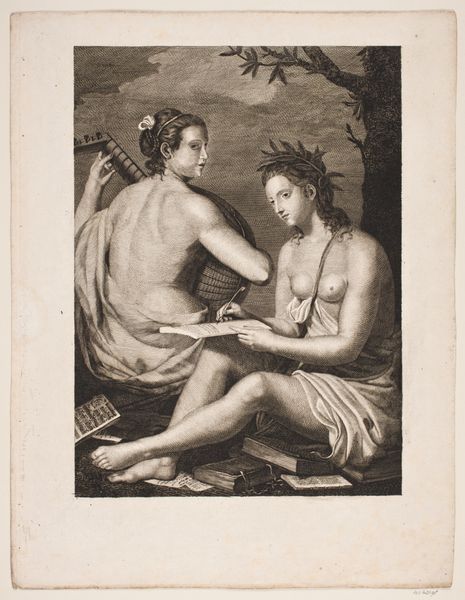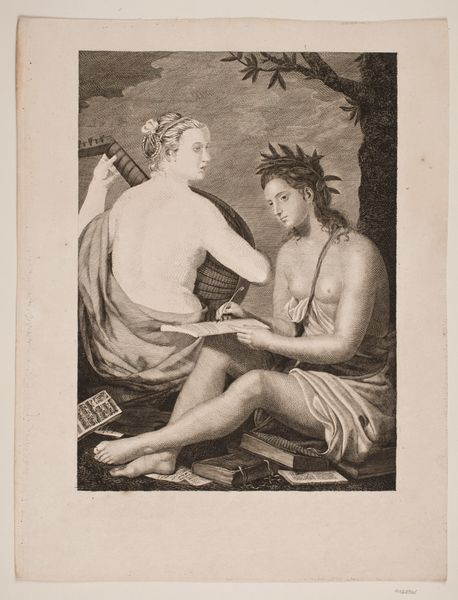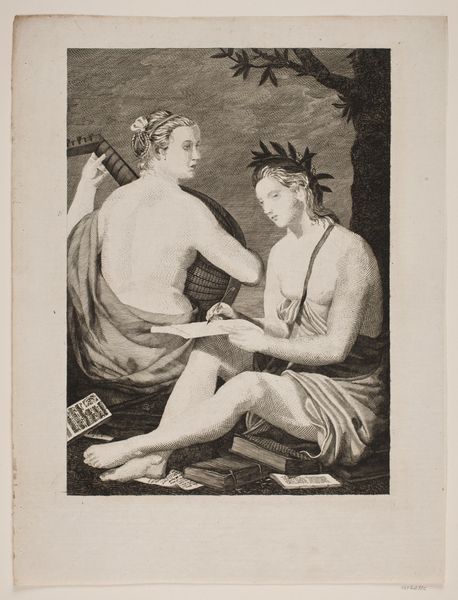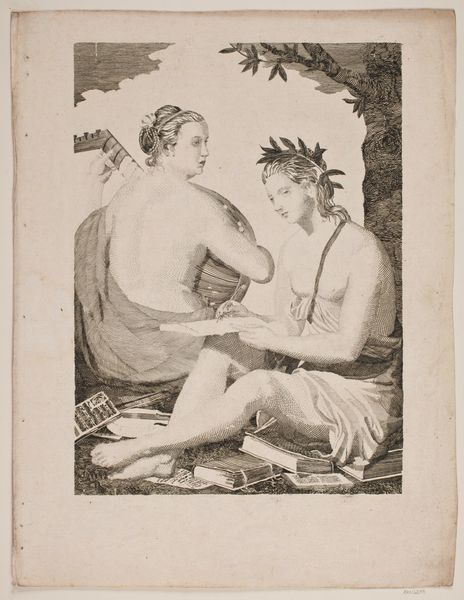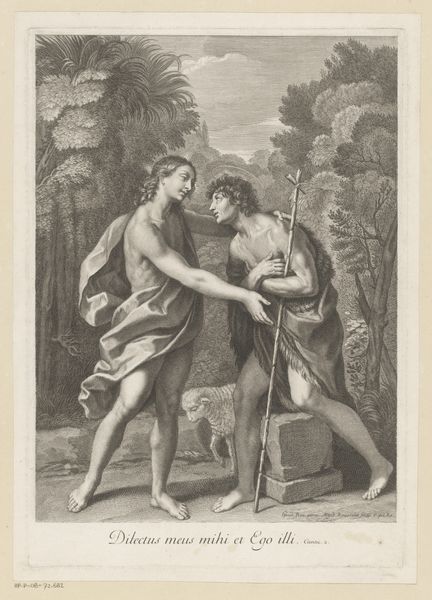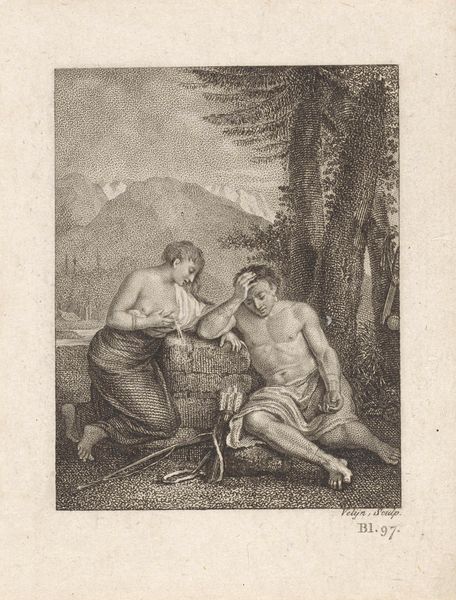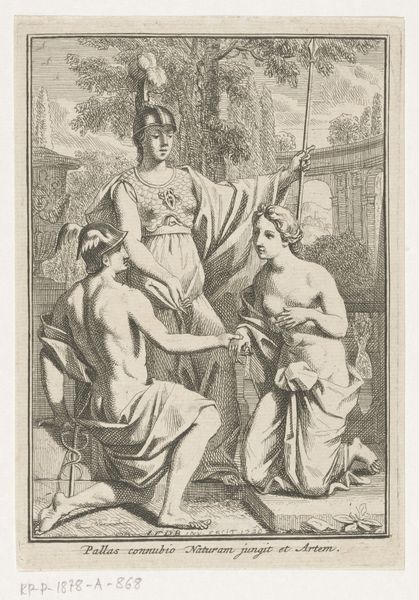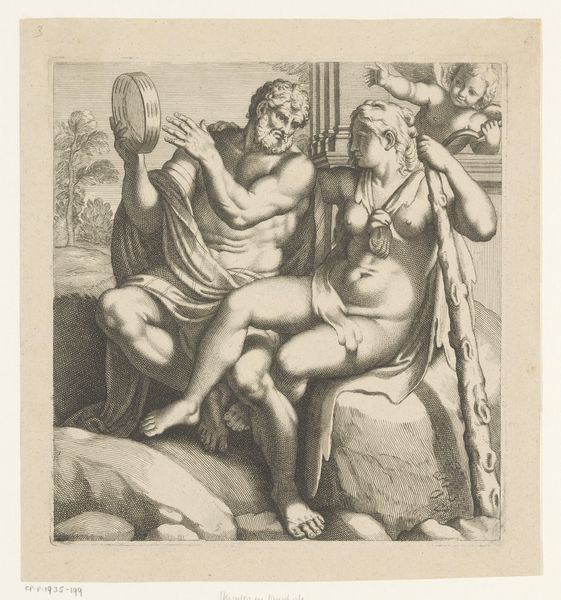
drawing, print, engraving
#
portrait
#
drawing
#
neoclacissism
# print
#
classical-realism
#
figuration
#
form
#
line
#
history-painting
#
engraving
Dimensions: 375 mm (height) x 255 mm (width) (plademaal)
Curator: This print is titled "Terpsichore et Kalliope," created by Gerhard Ludvig Lahde in 1791. It's currently held in the collection of the SMK, the National Gallery of Denmark. Editor: My first impression is that the artist wants us to contemplate not just the muses but the very essence of artistic inspiration. The composition is a classical tableau—very staged. Curator: Precisely! Consider the linear precision of the engraving—a technique so crucial in disseminating Neoclassical ideals at the time. Notice how the figures, based on Greco-Roman models, are rendered with anatomical accuracy and idealized forms. It’s line and form that truly communicate the artist’s vision here. Editor: It’s interesting, isn't it, to think about how prints like these democratized access to these forms? No longer confined to painted canvas, Neoclassical aesthetics could circulate widely, influencing taste and even craftwork on a broad scale. How were these engravings produced? Was it a purely mechanical process? Curator: Mechanization certainly played a role. But think too about the semiotics. The laurel wreath, the lyre, the writing tablet—these are all carefully chosen signifiers contributing to a coherent symbolic system meant to elevate the artistic process to the realm of the divine. Editor: Yes, divine... and undeniably gendered. We have these two female figures, embodying poetry and dance, collaborating…or are they? One plays while the other dutifully records, a division of labor that, while seemingly harmonious, perhaps warrants a closer look. Consider the material implications, too—the cost of paper, the access to musical instruments. It suggests patronage, a socioeconomic context shaping what is, and isn’t, represented. Curator: A fascinating reading. For me, however, the emphasis lies in the formal balance achieved between the figures, a carefully structured dynamic that mirrors the harmonious ideals championed by the Neoclassical movement. Editor: True, there is an undeniable elegance to the composition. Though next time, I want to talk about the means by which this aesthetic gets replicated—how those clean lines come to exist outside of the 'high' art world. Curator: A perspective to look forward to. The way we read lines, the way they create shapes or suggest movements-- that, I think, helps in viewing more and understanding artwork.
Comments
No comments
Be the first to comment and join the conversation on the ultimate creative platform.
